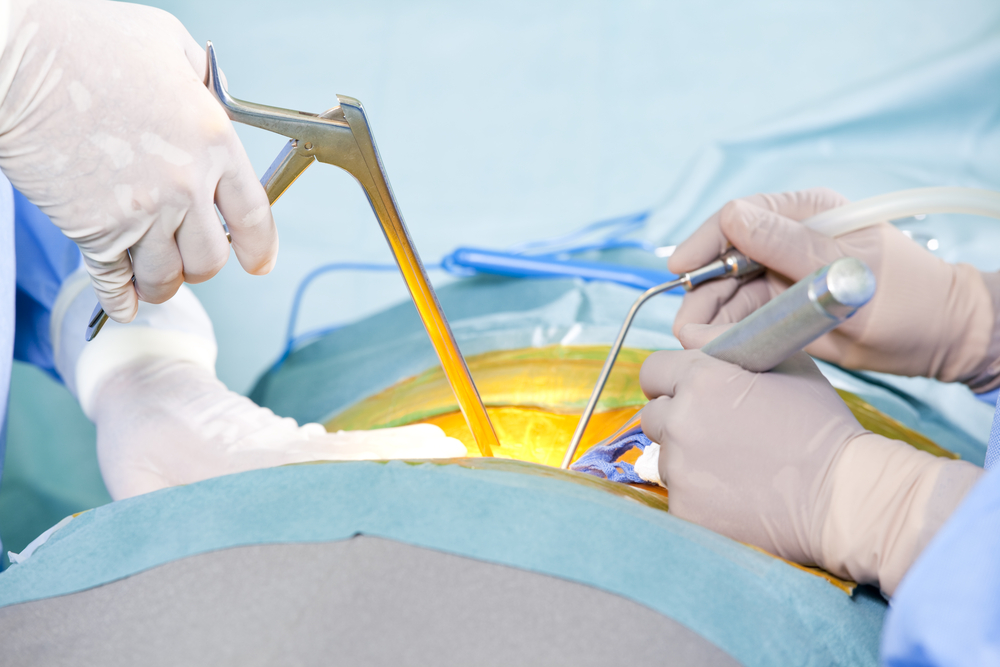A lumbar laminectomy is used to help relieve excess pressure on the spinal nerves located in the lower back or lumbar region. This pressure can cause pain that radiates down the leg or that is centered in the back, both of which can be treated with this procedure. The origin of the term laminectomy is the words ‘lamina’ and ‘ectomy.’ Lamina refers to a thin layer, while ectomy is the Latin word for ‘removal.’ As such, a lumbar laminectomy is the removal of the top of the vertebra to relieve pressure on nerves leaving the spine.

When Would Dr. Zahir Suggest A Laminectomy?
Patients who are suffering from spinal stenosis, a condition defined as the narrowing of the spinal canal caused by arthritis in the facet joints, degradation of discs, or the growth of bone spurs that impede on the space available for nerves, can benefit from this procedure. As spinal stenosis increases in severity, the space available for the nerves will decrease, and eventual compression will begin. At this point, a lumbar laminectomy may be called for. The purpose of this procedure is to reduce or eliminate the pressure being put on these nerves by increasing the available space. This is accomplished by removing the portion of the vertebral Lamina that is applying pressure to the nerve.
What Should I Expect During My Procedure?
You will begin the procedure by lying on your stomach on an operating table. Once in position, you will be administered general anesthesia that will render you unconscious for the duration of the procedure. At this point in the surgery, an incision will be made along the mid-line of your back to expose the treatment site. Once the surgical site is exposed, the tissue, muscles, fat, and skin will be moved aside to access the target vertebrae. The necessary portion of the Lamina will be removed, as well as any necessary bone spurs or disc material. The soft tissues will then be put back in place, and the incision closed. In some cases, a spinal fusion will be included with the procedure to help stabilize the spine, in which case a bone graft and stabilizing instrumentation such as rods, pins, and plates may be put in place.
What Is Recovery From This Procedure Like?
Each patient’s path to recovery will differ based on the specifics of their treatment. Their recovery plan will be determined based on these specifics and the advice and guidance of Dr. Zahir. Generally, patients will be able to move around the hospital by the end of the first day. Several weeks will be required to completely recover from the procedure, with the exact length being determined by your natural rate of healing, any apparent complications, and the specific activity/work you wish to return to.
Want to know if this procedure can provide the relief you need? Please contact us.



